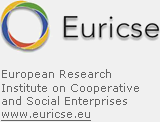The European Union Statistics on Income and Living Conditions (EU-SILC) is an instrument aiming at collecting timely and comparable cross-sectional and longitudinal multidimensional microdata on income, poverty, social exclusion and living conditions. This instrument is anchored in the European Statistical System (ESS).
The EU-SILC project was launched in 2003 on the basis of a 'gentleman's agreement' in six Member States (Belgium, Denmark, Greece, Ireland, Luxembourg and Austria), as well as in Norway. The starting date for the EU-SILC instrument under the below-mentioned framework Regulation was 2004 for the EU-15 (with the exception of Germany, the Netherlands and the United Kingdom, which had derogations until 2005), as well as for Estonia, Norway and Iceland. The 10 new Member States with the exception of Estonia started in 2005.
The instrument has also been implemented in Bulgaria, Romania, Turkey and in Switzerland as from 2007. Implementation in Croatia is being discussed.
The instrument aims to provide two types of data:
- Cross-sectional data pertaining to a given time or a certain time period with variables on income, poverty, social exclusion and other living conditions
- Longitudinal data pertaining to individual-level changes over time, observed periodically over, typically, a four year period.
Social exclusion and housing condition information is collected at household level while labour, education and health information is obtained for persons aged 16 and over. The core of the instrument, income at very detailed component level, is mainly collected at personal level but a few components are included in the household part of SILC.
EU-SILC based data
The EU-SILC has been established to provide data to be used for the structural indicators of social cohesion (at-risk-of poverty rate, S80/S20 and gender pay gap) and in the context of the two Open Methods of Coordination in the field of social inclusion and pensions.
For social inclusion, the most important output is the computation of the so called "Laeken indicators", including poverty rate, persistent poverty rate (crossed by age, gender, household type, activity status, work intensity and tenure status), S80/S20, Gini coefficient, in-work poverty. In future, most of the information on the "income and living conditions" domain under theme "Population and social conditions" will derive from the EU-SILC.
Additional information on EU-SILC.








